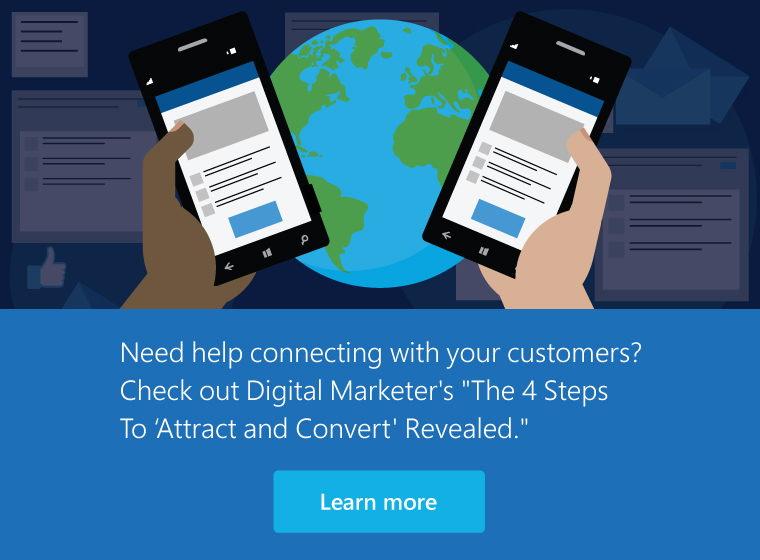
Building community: Enable sharing for stronger content
Social platforms are a great place to push out content. But the majority of brands tend to forget that it’s also a place for engaging with a community of followers. In fact, only 2% of brands engage deeply with their customers across channels, according to the 2017 State of Social Engagement.1 Humanizing your brand can help create value and lead to increased ROI.
When brands act “human” they engender loyalty and trust among their audiences. Perhaps most importantly, they build deeper relationships that lead to understanding. Real-life customer stories are more impactful than anything a brand can create alone. Building a collaborative community gives your brand access to customer insights that fuel content creation. Follow these rules to build your brand’s collaborative community.
Stop (collaborate) and listen
Consumers are more influenced by recommendations from those in their connected communities than by a brand’s marketing efforts.2 All the more reason to spend time listening to your community. Pay attention to how consumers interact. Take note of the topics discussed, questions posed, and values promoted. Remember that most communities aren’t developed around products or services, but out of shared ideals and desires. When a brand takes the time to listen to its community, it gathers intelligence about target audiences that can be used to have more meaningful conversations and create more relevant content.
The rules of sharing
A collaborative community doesn’t only want to hear what a brand has to say. Give consumers a voice by sharing appropriate follower content. Look for consumer generated videos, blog posts, and reviews that might benefit the entire community. This way, you open the door to two-way dialogue and turn your social platform into a collaborative community that listens and responds.
For Microsoft, not only does sharing content help reinvigorate the Office brand to look sleek and fun, it gives us opportunities to connect with influencers and extend reach. Here’s an example with “Smasher” Larry Lurr (competitive player of Super Smash Bros. games), who has over 34K Twitter followers. In social alone, the content personalized for Larry generated over 25K impressions.

Two out of every three purchasing decisions are based on emotional factors, according to Gallup research.3 Help others tell their stories by reaching out to learn more. Amplify the voices in your community by creating case studies and asking deeper questions in order to discover they ‘why’ behind consumer purchases. From these interactions, brands are able to create authentic content that makes an emotional connection and best serves their audiences.
Empower and reward
Your community should add genuine value for your audience, and for your brand. Recognize individual contributions with a like, comment, or share, to encourage further collaboration, and give your community reason to return the favor. Offer incentives, such as behind-the-scenes access, for engaging with your brand. More than 8 in 10 brand advocates say they have received questions that buyers won’t ask company representatives.4 Ample reason to encourage consumers to speak up, share stories, offer advice, answer questions, and provide feedback.
A collaborative culture empowers engagement and rewards those who contribute. Keep an ear to the ground, and prove that your brand listens by creating content or improving products based on those conversations. Engaged customers can be your greatest allies. Give them a voice, and encourage them to share their own stories.
More doing, less telling
Storytelling can be incredibly impactful. But when brands build a story from real customer actions, they raise the stakes even higher. Be not only a voice for your brand, but a voice for the entire community. In addition to creating powerful content, brands can also ‘do’ by supporting a cause important to the community. Coming together over shared goals works to strengthen ties and increase reach.
A truly collaborative community effectively dissolves the boundaries between a brand and its audience, providing consumers with a way to relate to one another, share experiences, and ask questions. Participate in conversations, spend at least as much time listening as talking, encourage feedback, and make consumers feel heard and appreciated.
Building a collaborative community goes a long way toward building brand loyalty and trust. Learn more about why you should be using this approach, and how best to humanize your brand and connect with your audience through social outreach. Watch Lesson 1 of The 4 Steps of “Attract and Convert” Revealed, a training presentation from Ryan Deiss, co-founder & CEO of DigitalMarketer in partnership with Microsoft.
1 https://www.lithium.com/state-of-social-engagement/
2 https://www.forbes.com/sites/michelleevans1/2017/08/22/5-stats-you-need-to-know-about-connected-consumers-in-2017/#681ebccc1962
3 http://www.gallup.com/services/176297/customer-engagement-core-strategy.aspx
4 https://www.needle.com/blog/needle-introduces-advocate-marketing-cloud-first-platform-mobilizes-brand-fans-drive-e-commerce/





